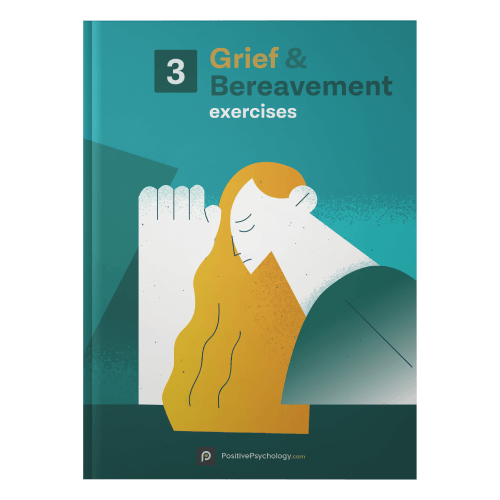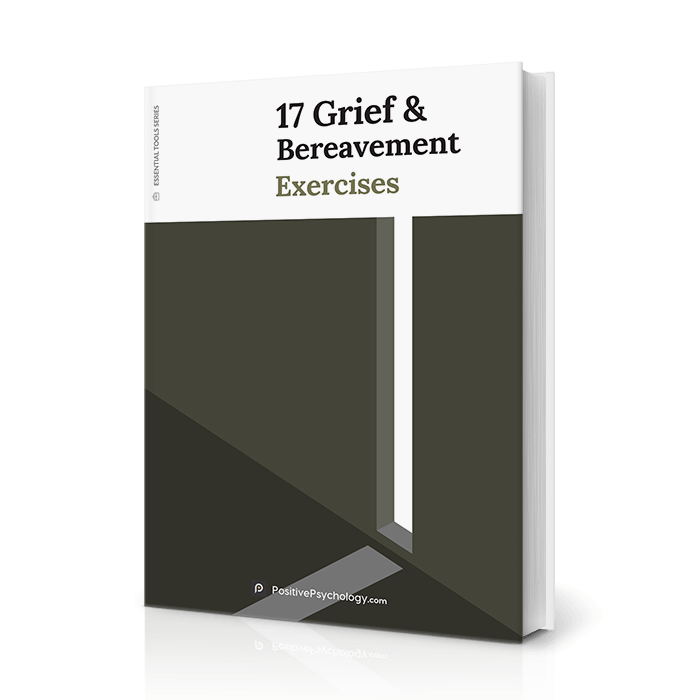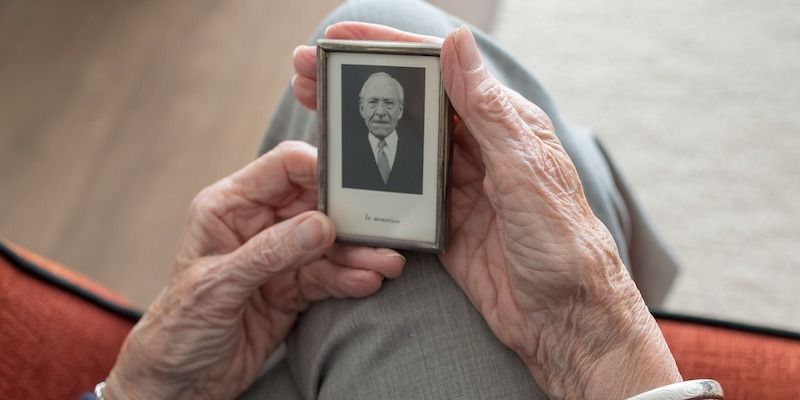Maladaptive Coping: 15 Examples & How to Break the Cycle
 I know I’m procrastinating.
I know I’m procrastinating.
I’ve checked my email twice and scrolled through social media for more than an hour. And yet, I’m still writing the same paragraph.
We all find ways of escaping what needs to be done – typically, it’s a task we don’t want to perform – but it can get out of control. Maladaptive coping can escalate and even cause us to avoid engaging with others and facing up to stressful situations.
Several techniques can help us reframe our thinking, get back on track, and engage with the activities we avoid. This article explores the background to maladaptive coping and how we can help our clients put better strategies in place.
Before you continue reading, we thought you might like to download our three Grief Exercises [PDF] for free. These science-based tools will help you move yourself or others through grief in a compassionate way.
This Article Contains:
What Is Maladaptive Coping?
“Problems are not the problem; coping is the problem,” says Virginia Satir, a prominent clinical therapist (Thompson et al., 2010).
We are all experts in avoidance to some degree; we put off tasks and get out of situations that risk being stressful.
Rather than writing the email, we empty the dishwasher, check the news on our phone, or stare at our screensaver, daydreaming.
Wasting time can be annoying; we are often delaying the inevitable. But when magnified, such behavior, known as maladaptive coping, can be harmful. We avoid situations, events, and people, damaging our development, restricting our growth, and failing to meet our psychological needs.
Maladaptive coping strategies are not only unhelpful, they negatively impact our mental wellbeing. Such behavior prevents us from engaging in stressful situations – mentally, physically, or emotionally – and can lead to social isolation (Thompson et al., 2010; Enns, Eldridge, Montgomery, & Gonzalez, 2018).
So, where does it come from?
Learning to cope
Coping strategies begin in early childhood with psychological and physiological responses to stress. Research using psychobiological models suggests that our sensitivity to input from the environment in our early life contributes to both our physical and mental health problems as adults (Wadsworth, 2015).
In the first year of life, we begin using coping strategies as we adapt to our interactions with caregivers. Sucking our thumb and looking away provide early examples of self-soothing and regulation behaviors. In the decades that follow, we become more independent and develop a toolkit of coping skills – more or less appropriate – to handle stress.
After all, stressful situations are a part of life. They are natural and essential, and encourage us to learn how to develop and respond to them, forming a balanced approach to life.
Toddlers move on from crying and looking for physical comfort to seeking help and ways of avoiding stress. Elementary school years begin with the development of more emotional awareness and higher cognitive functions (metacognition) and showing increasing signs of engaging in problem solving and cognitive reframing – looking at situations differently.
As these approaches continue to develop, by late adolescence, most of us have a repertoire of healthy coping strategies, including ones that are (Wadsworth, 2015):
- Active – solving problems, looking for appropriate support, planning, and reframing
- Accommodative – adjusting expectations and preferences to suit the situation and reduce stress (e.g., forgiveness and compromise)
- Emotional – regulating emotional responses to stress and difficult situations
- Behavioral – using behavior to manage stress (e.g., going for a walk, taking a deep breath, or talking to a friend)
- Cognitive – mental activities that help manage stress (e.g., thinking about the bigger picture, pleasant images, or the potential benefits of the situation)
How and when each strategy gets implemented depend on the context and answers to questions such as:
How stressful is the situation?
How urgent is it?
Do I have control?
Being too rigid in the tactics we use can be detrimental. Typically, we develop and use a combination of strategies, depending on the situation and our state of mind.
Maladaptive coping origins
Maladaptive strategies can arise from a disruption to the typical coping development sequence in response to (Wadsworth, 2015):
- Overwhelming stress – conflict within the family, financial hardship, death of a loved one, etc.
- Poor treatment – growing up in a violent environment or not being given love and parental support, etc.
- Emotional invalidation – being told your emotions are not reasonable, rational, or valid, etc.
Research shows that children placed in such situations are less likely to develop coping skills involving managing emotions and solving problems.
In response to stressful situations or not experiencing adaptive behavior, older children and adolescents may continue with less mature coping strategies such as avoidance and denial.
Development in later life
While maladaptive coping strategies can develop in childhood, they can also appear later in life in response to life events such as loneliness, abuse, and trauma.
15 Examples of Maladaptive Coping Strategies
When confronted with stressful situations that leave us with feelings of anxiety, panic, and extreme stress, we often resort to maladaptive behaviors.
And yet the range in human response is vast. For some, it may be relatively harmless – occasional daydreaming or procrastination – for others, it could be self-harm or drug use.
Such maladaptive behavior may temporarily relieve stress or anxiety, but the underlying thoughts, fears, and concerns are not being addressed. Short-term relief may result in a longer term psychological upset.
Maladaptive coping techniques
Unhelpful coping techniques vary in terms of their frequency of use and degree of negative impact. Such variation is a good indication of the inability of many of us to cope and the lengths we will go to either ignore the issue or the feelings and regain a sense of control.
Maladaptive coping techniques include the following (Thompson et al., 2010; Enns et al., 2018; Wadsworth, 2015; Tapu, 2016):
- Substance abuse
Consumption of excessive amounts of alcohol and taking legal and illegal drugs. - Rumination
Extreme and ongoing focus on “depressive symptoms and on the implications of those symptoms” (Thompson et al., 2010). - Emotional numbing
Shutting down feelings to provide relief from stress and anxiety. - Escape
Changing behavior to avoid the situation and difficult feelings. - Intrusive thoughts
Unwelcome or involuntary ideas and thoughts that may be upsetting and difficult to manage. - Daydreaming
While occasional daydreaming may result in a loss of focus and delayed task completion, in its extreme, maladaptive daydreaming is a form of addiction to daydreaming that can last for hours at a time. - Procrastination
Procrastination, like rumination, can lead to the conscious or unconscious avoidance of difficult issues or tasks that require completion. - Self-harm and binge eating
Both can be ways of dealing with difficult feelings and usually need specialist support. - Blaming and self-blaming
These form cognitive strategies that affect how an individual relates to difficult circumstances. - Behavioral disengagement
Under challenging situations, individuals may disengage or reduce the effort in a task or social situation. - Risk-taking behavior
Another form of behavioral disengagement used to alleviate the adverse effects of a situation. - Sensitization
Overly rehearsing a future event, excessive worrying, and hyper-vigilance. - Safety behaviors
The tendency to rely on someone or something to help cope with extreme anxiety. The person may seek continual reassurance that things will be okay. - Anxious avoidance
Avoiding situations or events that may cause upset. Unfortunately, this causes the person never to confront their fears or unlearn their faulty beliefs. Removing or avoiding such unpleasant experiences may cause the behavior to worsen.
Long-term use of such coping styles – and there are many others – is unhealthy. Such strategies are associated with high levels of psychological distress, including anxiety and depression in adolescents and adults (Thompson et al., 2010).
Outcomes

But over time, poor coping tactics can cause ongoing problems including:
- Reinforcement of fear of particular situations
- Avoiding family and friends to reduce the chance of being put in situations you don’t want to be in
- Limited use of social skills, leading to a failure to develop or practice skills needed for interaction with others
- Lowered educational and professional achievement due to avoiding interpersonal relationships and putting yourself forward
- Avoiding difficult conversations, leading to problems being assertive and taking control when needed
- Deteriorating physical and mental health – adopting unhealthy strategies and behaviors will ultimately damage both mind and body.
What is a maladaptive coping mechanism? – More Love
Negative Coping Mechanisms for Stress and Depression
People suffering from depression or heightened stress tend to focus excessively on the negative while failing to recognize positive experiences. In turn, activities can seem pointless and hopeless.
While reactions to situations are often emotional, the strategies adopted are frequently avoidant, removing the need for engagement with people and situations (Beck, 2011; Orzechowska, Zajączkowska, Talarowska, & Gałecki, 2013).
Examples of such thinking include:
I’m not going to text my friends; they will not want to see me.
I’m not going to apply for the job; I will probably not get an interview anyway.
Other avoidant strategies include safety behaviors – such as not smiling, avoiding small talk, and dressing down – that make the individual less visible.
Cognitive Behavioral Therapy has been beneficial in such cases by focusing on strengths and positive qualities while helping patients (Beck, 2011):
- Identify automatic thinking
- Devise solutions to their problems
- Learn new skills
7 Techniques to Break Your Maladaptive Coping Patterns

Avoidance-oriented coping is a way of ignoring the existence or impact of a situation. Approach-oriented coping focuses on managing emotions or changing the situation to one that is less stressful or challenging (Joseph, 2013).
We can help children at risk of developing maladaptive coping strategies – or adults already presenting with them – by encouraging them to engage in more appropriate approach-oriented behavior (Wadsworth, 2015).
And it is vital. Improved coping strategies have been linked to decreased psychological distress, lowered anxiety, reduced depression, and better overall health and resilience (Thompson et al., 2010).
While maladaptive coping may initially appear to work, it increases stress and anxiety and reinforces damaging behavior over time.
And yet, it doesn’t have to be this way. Avoidance-oriented coping can be replaced by approach-oriented coping that focuses on managing, eliminating, or reducing stressors.
Try some of the following with your clients:
1. Cognitive restructuring
Replace negative thoughts with more healthy, positive ones that reduce the impact of real or imagined events.
- The Cognitive Restructuring Worksheet uses Socratic questioning – a series of open, focused questions between two people – to challenge irrational thoughts.
- The Decatastrophizing Steps Worksheet uses five questions to take a person through deconstructing a ‘catastrophe.’
2. Distraction
When a difficult situation presents itself, it is possible to distract oneself from negative urges through music, breathing techniques, writing down thoughts, meditation, etc.
Such techniques can have a calming effect while redirecting attention away from the stressor.
3. Thought stopping
Interrupting or breaking the cycle of negative thoughts as they arise can help stop panic from spiraling and the domino effect of negative thoughts.
Work with clients to find an appropriate mechanism to interrupt negative thinking. For some, it may be to say ‘stop’ out loud (or in their head); for others, it could be snapping an elastic band on the wrist.
- Outside of the immediate situation, the Finding Discrepancies Worksheet can be useful to consider the positive and negative effects of continuing or stopping a behavior.
- Automatic reactions can be overwhelming and occur before conscious thought can intervene. Use the Automatic Thought Record Worksheet to reflect on faulty ways of thinking.
4. Self-compassion
Shauna Shapiro (2020) describes two common and yet ineffective coping mechanisms in her book, Rewire Your Mind. When confronted by a challenge, we often respond by either dwelling on our shame or bolstering our self-esteem.
Both are of limited value in helping us cope; instead, we should adopt a mindset of self-compassion (Shapiro, 2020).
- We view ourselves with shame and self-judgment. We attempt to motivate change within ourselves by poring over our shortcomings and scrutinizing our inadequacies.
It doesn’t work. Instead, it triggers an adverse biological response – the release of stress hormones, cortisol, and norepinephrine. They take away our cognitive flexibility and remove our capacity to learn.
- While some self-help literature tells us that self-esteem is crucial to our resilience and a happy life, there is a problem. Self-esteem requires success to prove our worth.
Self-compassion, on the other hand, is like your dog. It looks at you and says you are “worthy no matter what” (Shapiro, 2020). If we want to stop the cycle of repeating our mistakes, then we need to learn from them. Self-compassion releases oxytocin, a feel-good neurotransmitter that reduces distress, increases feelings of safety, and helps us form new connections.
A particularly useful approach to creating self-compassion in our clients’ lives is by asking them to write themselves a Letter of Self-Compassion. By capturing how unworthy they feel and then viewing it with unconditional love, they can change how they think about themselves.
5. Coping statements
Christine Wilding (2015) suggests that creating a set of coping statements can help a client face up to challenges. Once written down, they can be regularly repeated and used to frame the client’s worries and difficulties in a more positive way (modified from Wilding, 2015):
- I’m going to face this challenge and handle it as best as I can.
- So, it may not work out 100%, but I will give it my best and see what happens.
- I’ve been in this situation before and survived.
- I’m strong enough to handle this, whatever happens.
- Things often aren’t as bad as they first seem.
Repeating positive statements can significantly impact the client’s state of mind and level of preparedness for what is to come.
6. Openness
Research by Barbara Fredrickson (2010) found that approaching challenges in an open way leads to improved handling of stress, finding novel solutions to existing problems, and an increased ability to cope.
Using the Stress as a Stimulus For Change exercise, your client can think about what they wish to change in their lives and open up to the possibility of starting the transformation process.
7. Flow
Imagine getting more done in the same time and producing your best work more often. That is the potential of flow.
Often our maladaptive coping mechanisms are more unhelpful than damaging. Finding that sweet spot when it comes to work can help. Indeed flow, according to psychologist Mihaly Csikszentmihalyi (2002), is the “sense of everything coming together” and being the best version of ourselves.
When immersed in an experience, we achieve our highest focus and our best work, and perhaps most importantly, we enjoy it.
So how do we get there?
It is crucial to find a balance between the situation’s difficulty and an individual’s skillset to reach flow. Ask your client to try some activities from this list of common flow activities to see if they can increase the frequency and duration of that optimum balance.
PositivePsychology.com’s Helpful Resources
The Realizing Resilience Masterclass is an excellent resource for practitioners.
Teach your clients how to become more resilient and mentally tough with the science-based techniques and tools in this online masterclass. It will help them not only bounce back from life’s challenges, but also adopt more life-enhancing coping strategies.
A resource on how to manage cognitive restructuring is this valuable article with 16 Decatastrophizing Worksheets and Tools.
This article on How to Deal With Anxiety provides helpful coping resources.
If you’re looking for more science-based ways to help others move through grief in a compassionate way, this collection contains 17 validated grief and bereavement exercises. Use them to help others find balance as they attempt to make sense of a life that has been irrevocably changed.
A Take-Home Message
There are times in our lives when we avoid situations or tasks that we know will be challenging or painful. We put it off, thinking it will not have a significant effect on our physical or mental wellbeing, but ultimately, we know it has to be done.
Depending on the circumstances, delaying may even be the right thing to do. But when such avoidant tendencies stop us from leading a full and authentic life, we can benefit from help.
For example, not applying for a job because we are fearful of being put in a position we cannot handle may leave us feeling unfulfilled. And excessive drinking or drug use to get through the day will damage us and those close to us in our lives.
Whether maladaptive coping strategies developed in our early years or later in life, they are not fixed. As humans, we have an incredible ability to change; our brain’s neuroplasticity enables us to replace unhelpful or damaging behavior with something that encourages growth and positivity.
Helping clients recognize their maladaptive behaviors and understand the harm they cause is vital. Work with them to identify strategies that are not working, replace them with more appropriate techniques that ultimately meet their psychological needs, and live a more fulfilling life.
We hope you enjoyed reading this article. Don’t forget to download our three Grief Exercises [PDF] for free.
- Beck, J. S. (2011). Cognitive behavior therapy: Basics and beyond. New York, NY: Guilford Press.
- Csikszentmihalyi, M. (2002). Flow: The psychology of happiness. London, UK: Harper & Row.
- Enns, A., Eldridge, G. D., Montgomery, C., & Gonzalez, V. M. (2018). Perceived stress, coping strategies, and emotional intelligence: A cross-sectional study of university students in helping disciplines. Nurse Education Today, 68, 226–231.
- Fredrickson, B. (2010). Positivity: Groundbreaking research reveals how to release your inner optimist and thrive. London, UK: Oneworld.
- Joseph, S. (2013). What doesn’t kill us: A guide to overcoming adversity and moving forward. London, UK: Piatkus.
- Orzechowska, A., Zajączkowska, M., Talarowska, M., & Gałecki, P. (2013). Depression and ways of coping with stress: A preliminary study. Medical Science Monitor, 19, 1050–1056.
- Shapiro, S. L. (2020). Rewire your mind: Discover the science + practice of mindfulness. London, UK: Aster.
- Tapu, M. (2016). Maladaptive daydreaming. The Psychologist. Retrieved October 13, 2020, from https://thepsychologist.bps.org.uk/volume-29/december-2016/maladaptive-daydreaming
- Thompson, R. J., Mata, J., Jaeggi, S. M., Buschkuehl, M., Jonides, J., & Gotlib, I. H. (2010). Maladaptive coping, adaptive coping, and depressive symptoms: Variations across age and depressive state. Behaviour Research and Therapy, 48(6), 459–466.
- Wadsworth, M. E. (2015). Development of maladaptive coping: A functional adaptation to chronic, uncontrollable stress. Child Development Perspectives, 9(2), 96–100.
- Wilding, C. (2015). Cognitive behavioural therapy: Techniques to improve your life. London, UK: Hodder.
Let us know your thoughts
Read other articles by their category
- Body & Brain (49)
- Coaching & Application (57)
- Compassion (26)
- Counseling (51)
- Emotional Intelligence (24)
- Gratitude (18)
- Grief & Bereavement (21)
- Happiness & SWB (40)
- Meaning & Values (26)
- Meditation (20)
- Mindfulness (45)
- Motivation & Goals (45)
- Optimism & Mindset (34)
- Positive CBT (28)
- Positive Communication (20)
- Positive Education (47)
- Positive Emotions (32)
- Positive Leadership (18)
- Positive Parenting (4)
- Positive Psychology (33)
- Positive Workplace (37)
- Productivity (16)
- Relationships (46)
- Resilience & Coping (36)
- Self Awareness (21)
- Self Esteem (37)
- Strengths & Virtues (31)
- Stress & Burnout Prevention (34)
- Theory & Books (46)
- Therapy Exercises (37)
- Types of Therapy (64)





What our readers think
Amazing article! Extremely helpful for group therapy with my patient base of recovering adults’ (SUD) as it has given me a few more key concepts to introduce.
Thanks for this great work concerning your findings on Maladaptive behaviors. Nimejifunza mengi.
How are intrusive thoughts maladaptive coping >>technique<< ?
Hi Robert,
That’s a great question. Intrusive thoughts can sometimes take the form of obsessively thinking about a particular topic. This persistent way of thinking can give us the illusion of having control over a situation, but in reality, we’re just cycling unproductively through the same thoughts. An example would be if you were to agonize over your partner’s fidelity or commitment to you by attempting to overanalyze their words of behaviors.
Again, this way of thinking can give us the illusion of control, thereby helping us feel like we’re coping, but when it’s spurred by underlying OCD, it’s likely to do more psychological harm than good.
Hope this answers your question!
– Nicole | Community Manager
Dear Doctor Sutton,
Thank you very much for your articles and work. They are helpful beyond words. Please pray for us and keep up your great much needed work.
sincerely, Thomas
amen God bless you